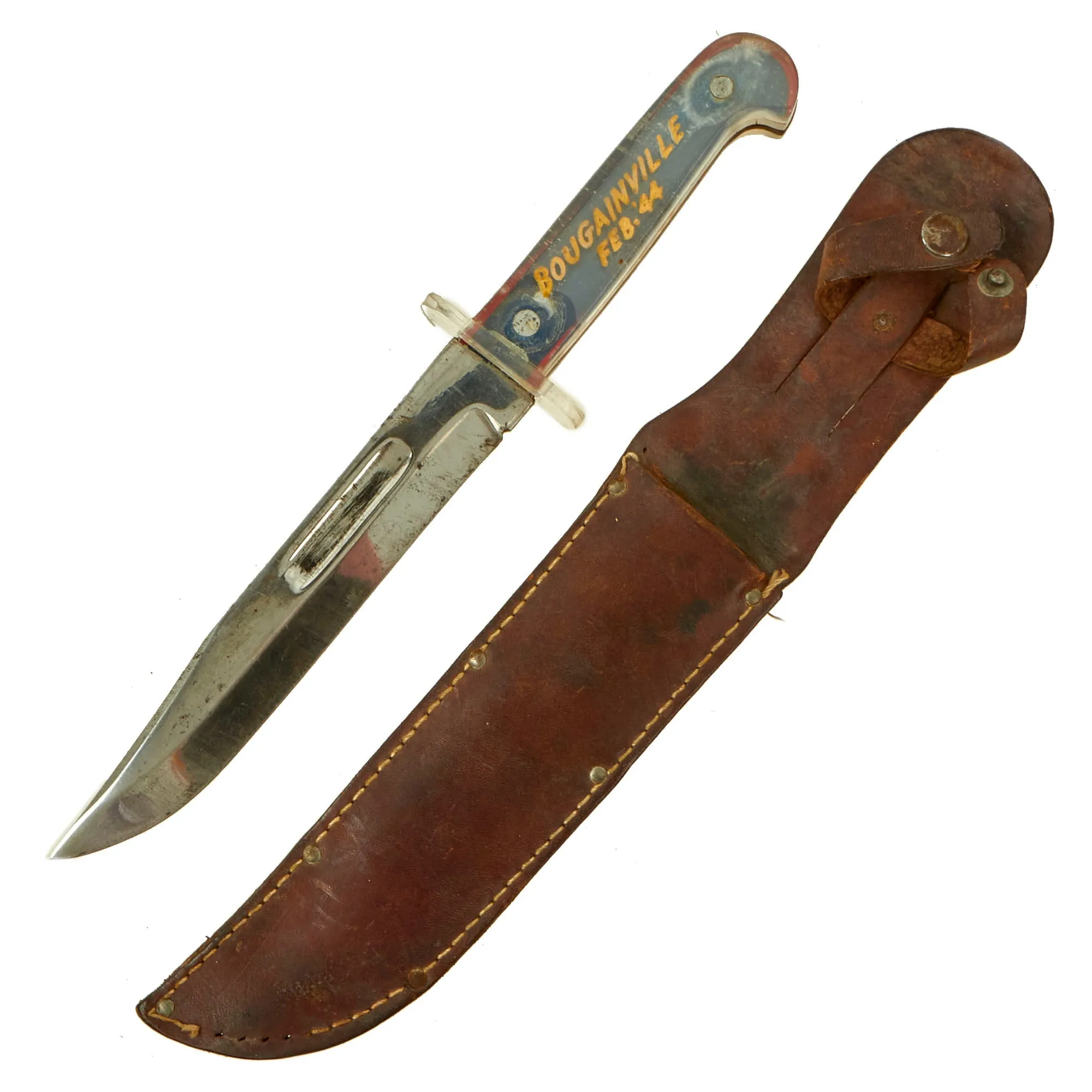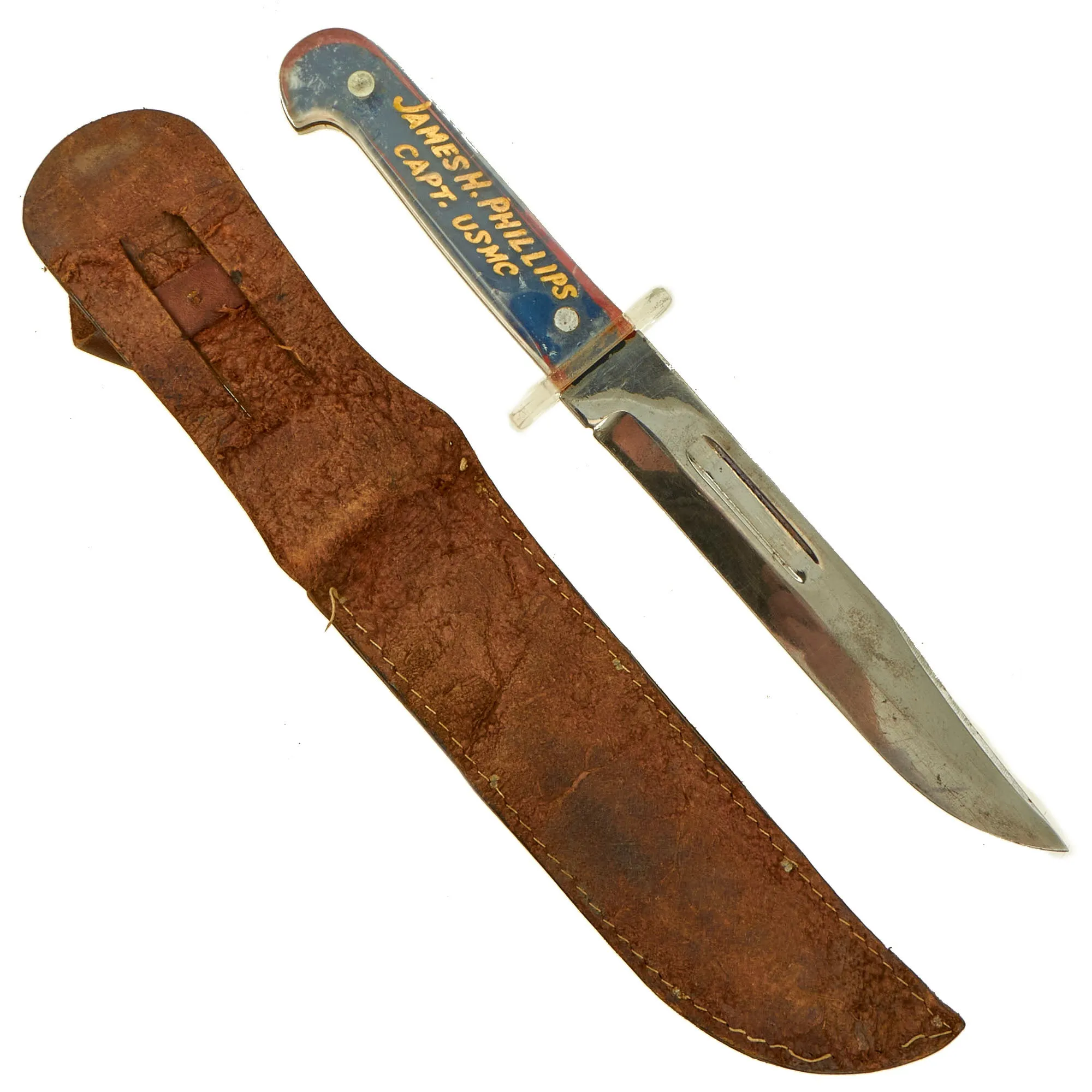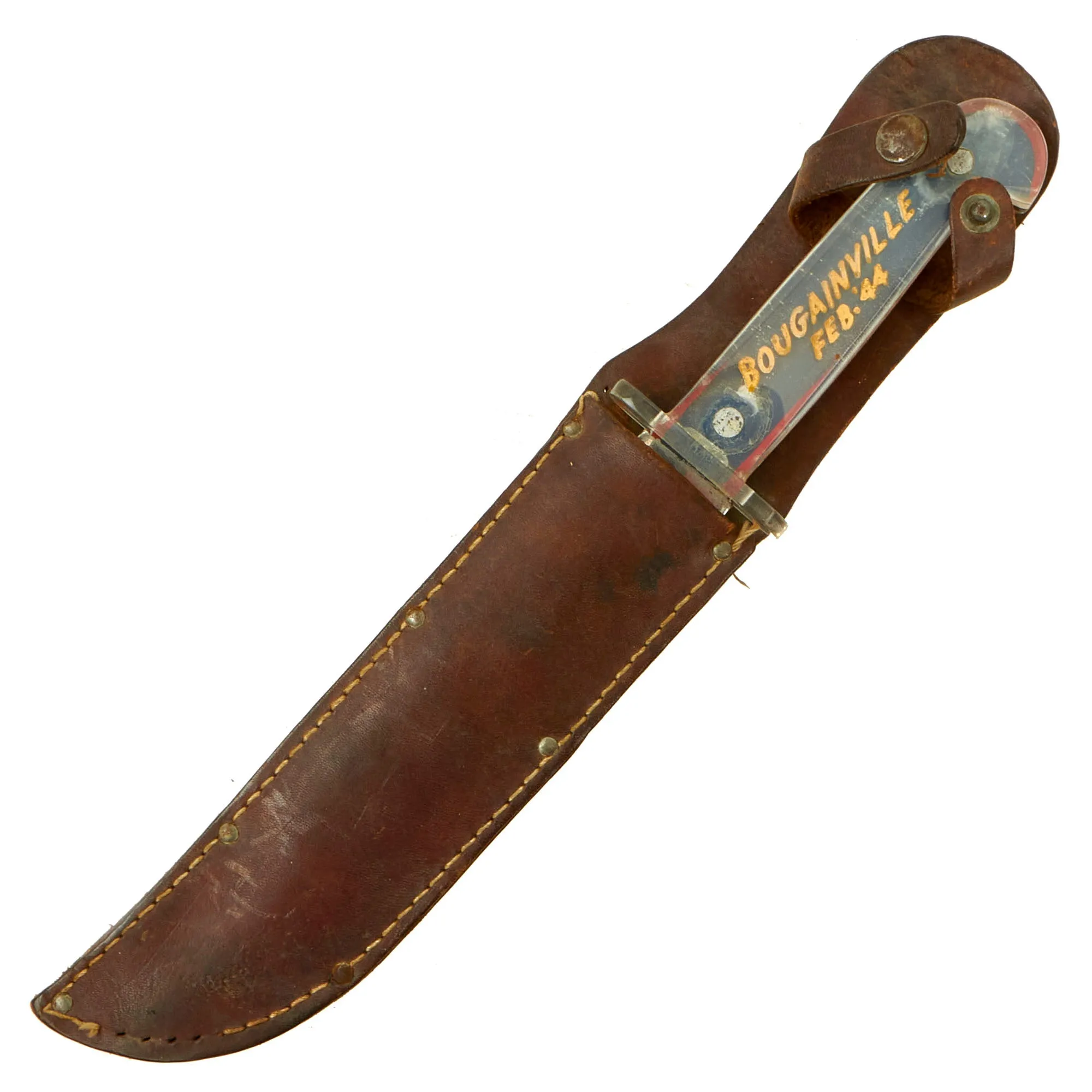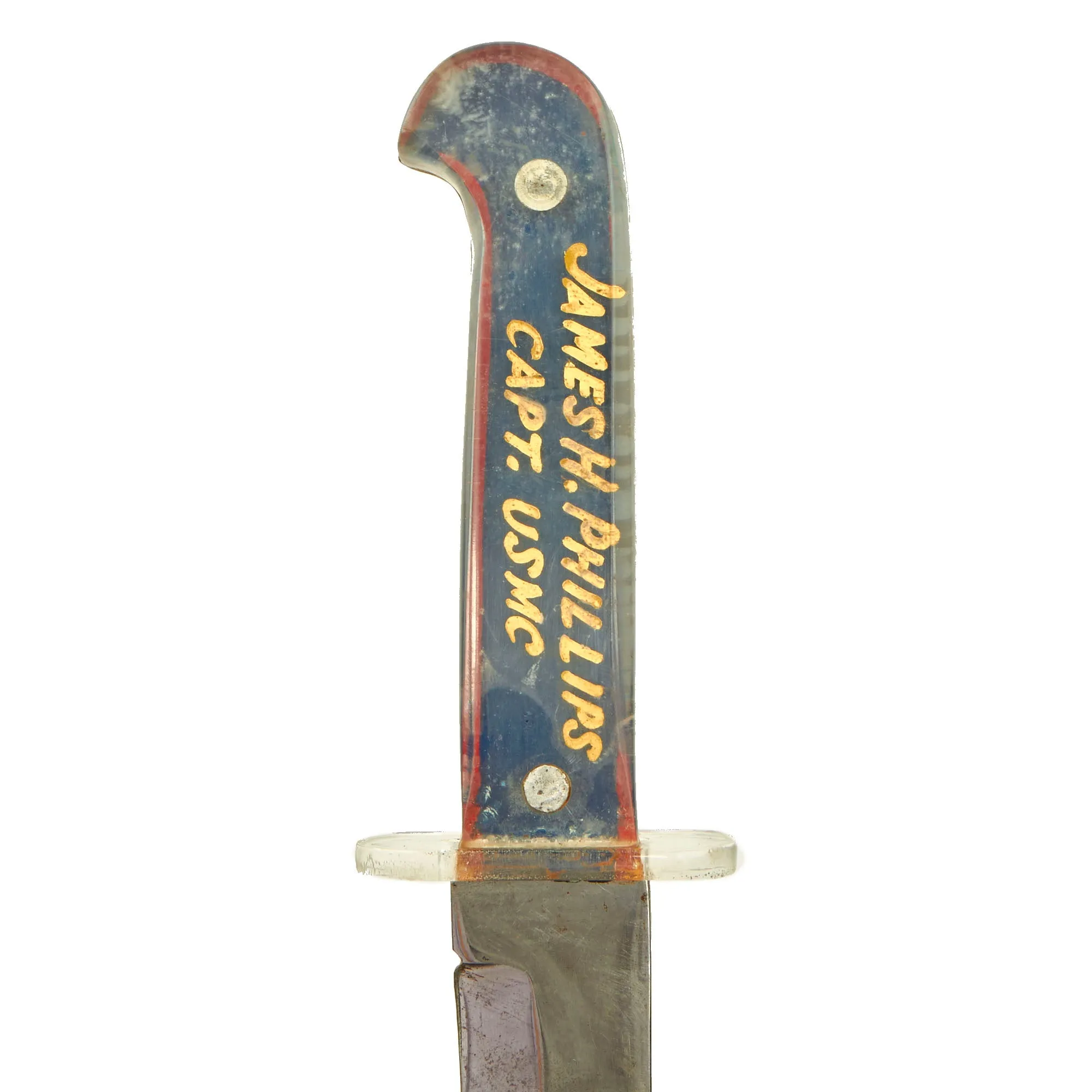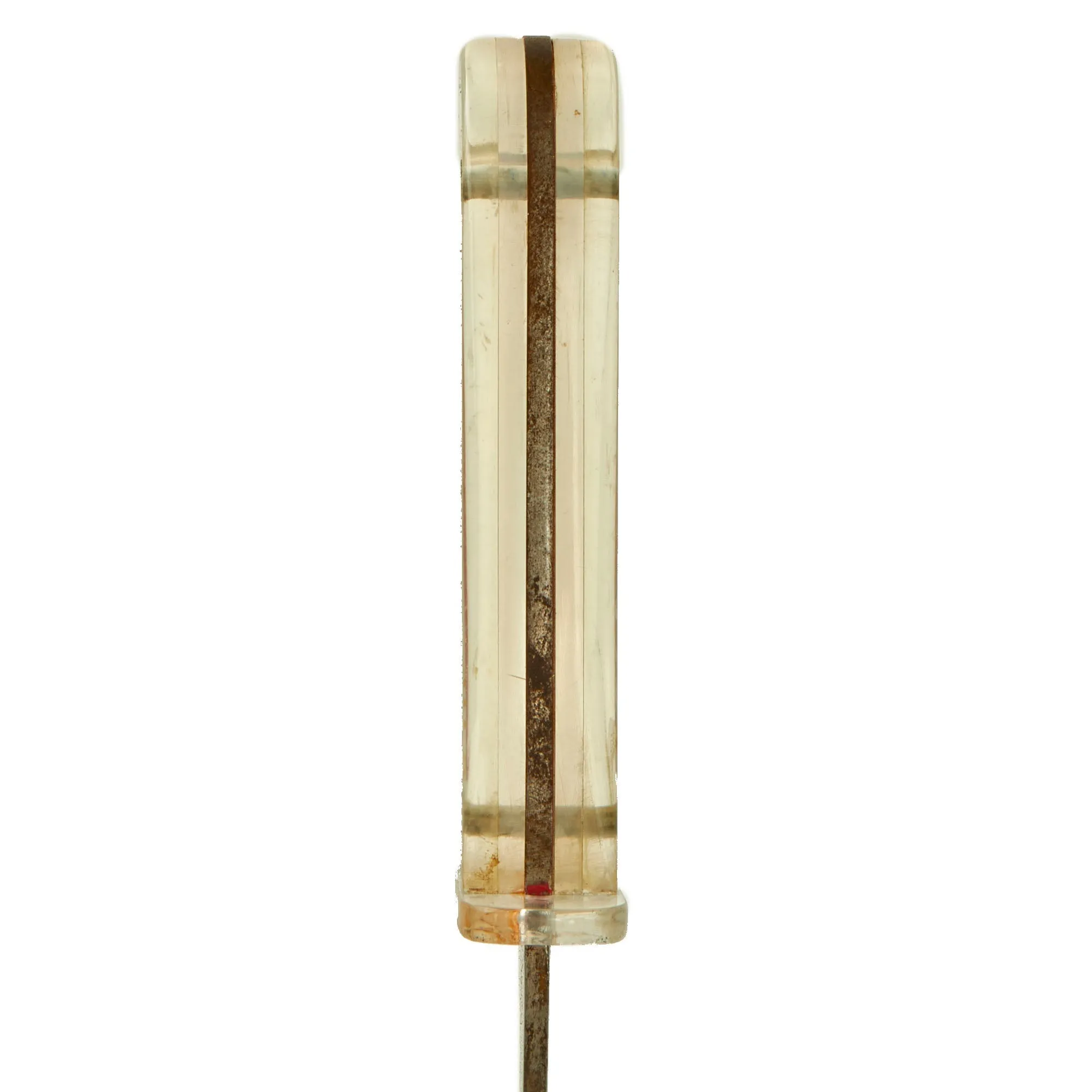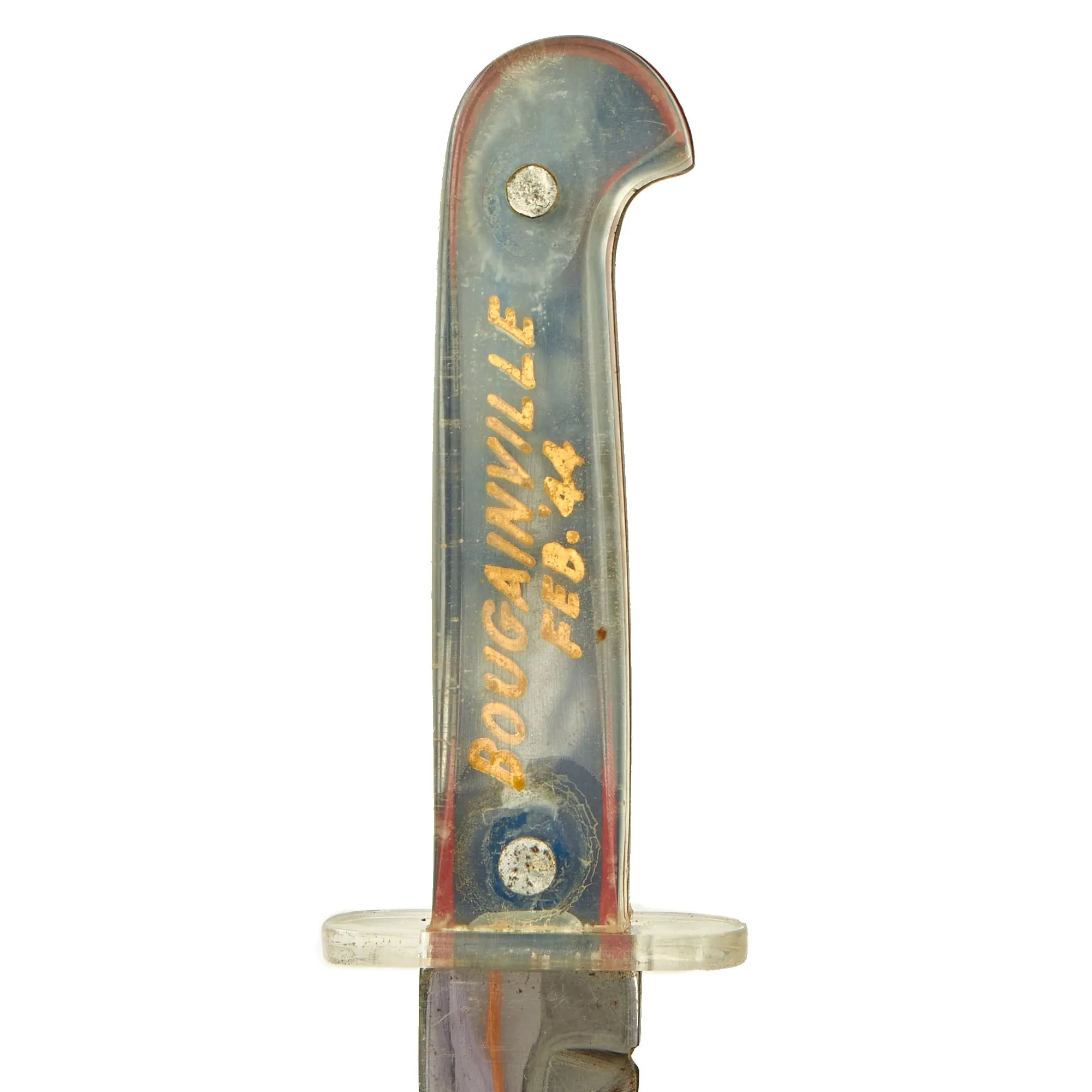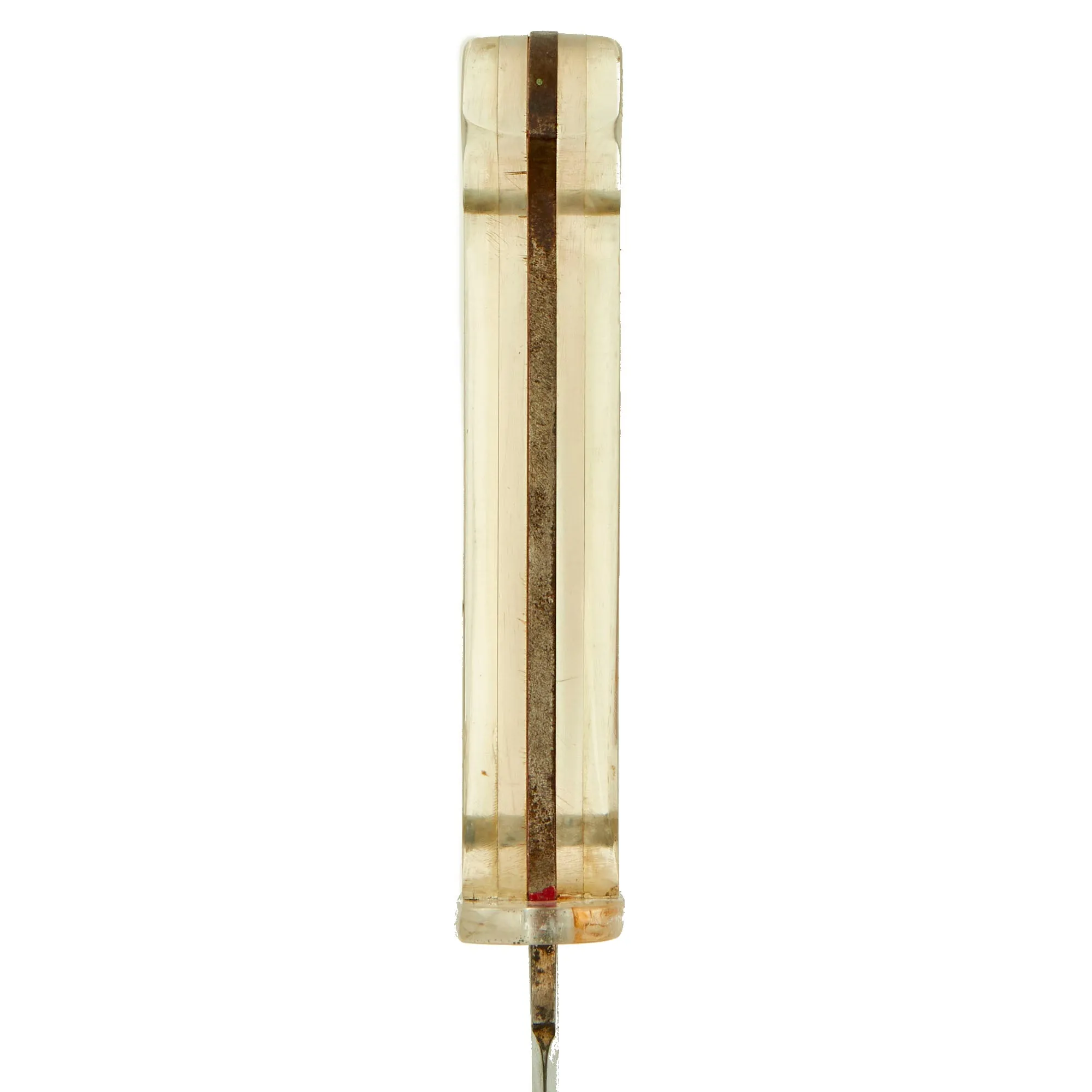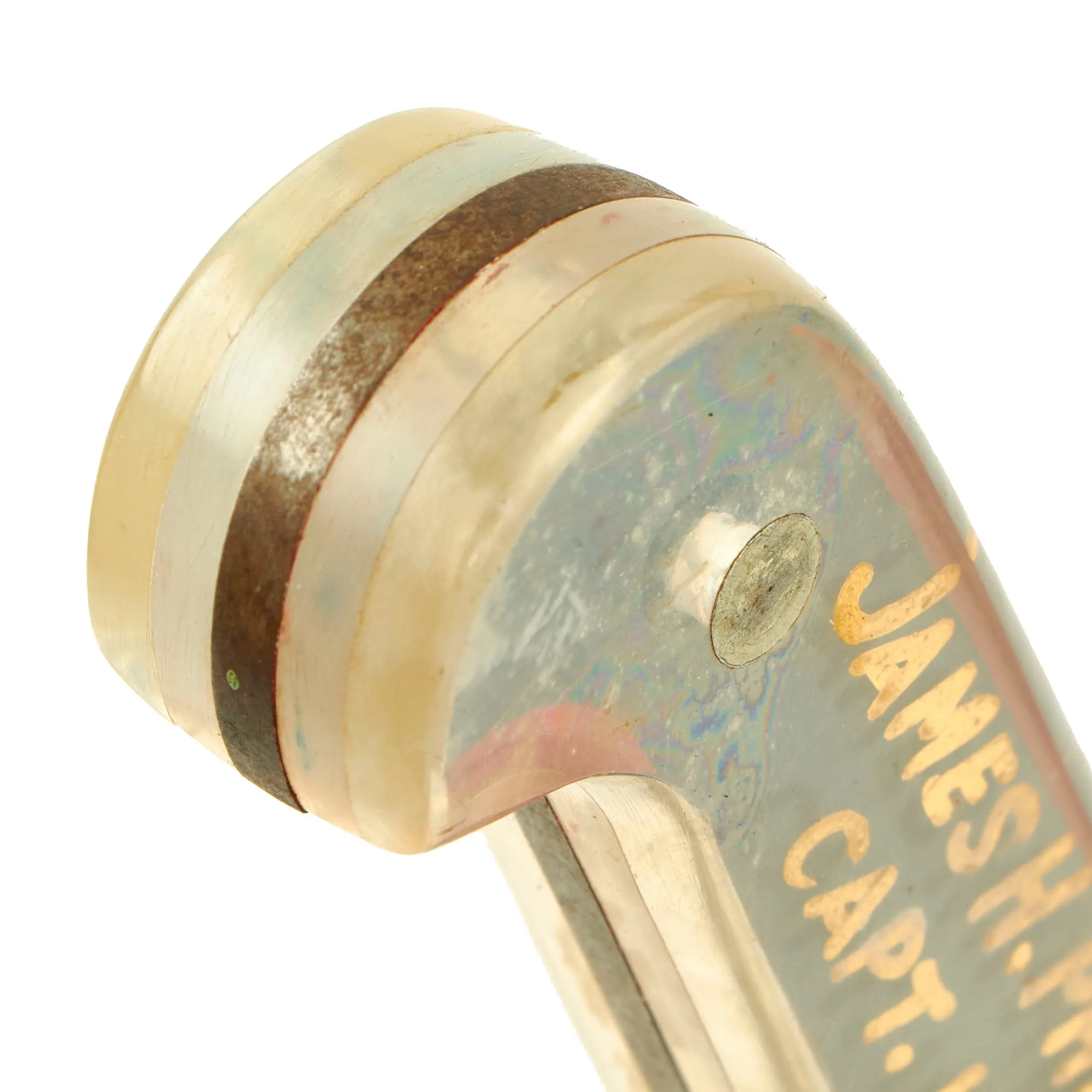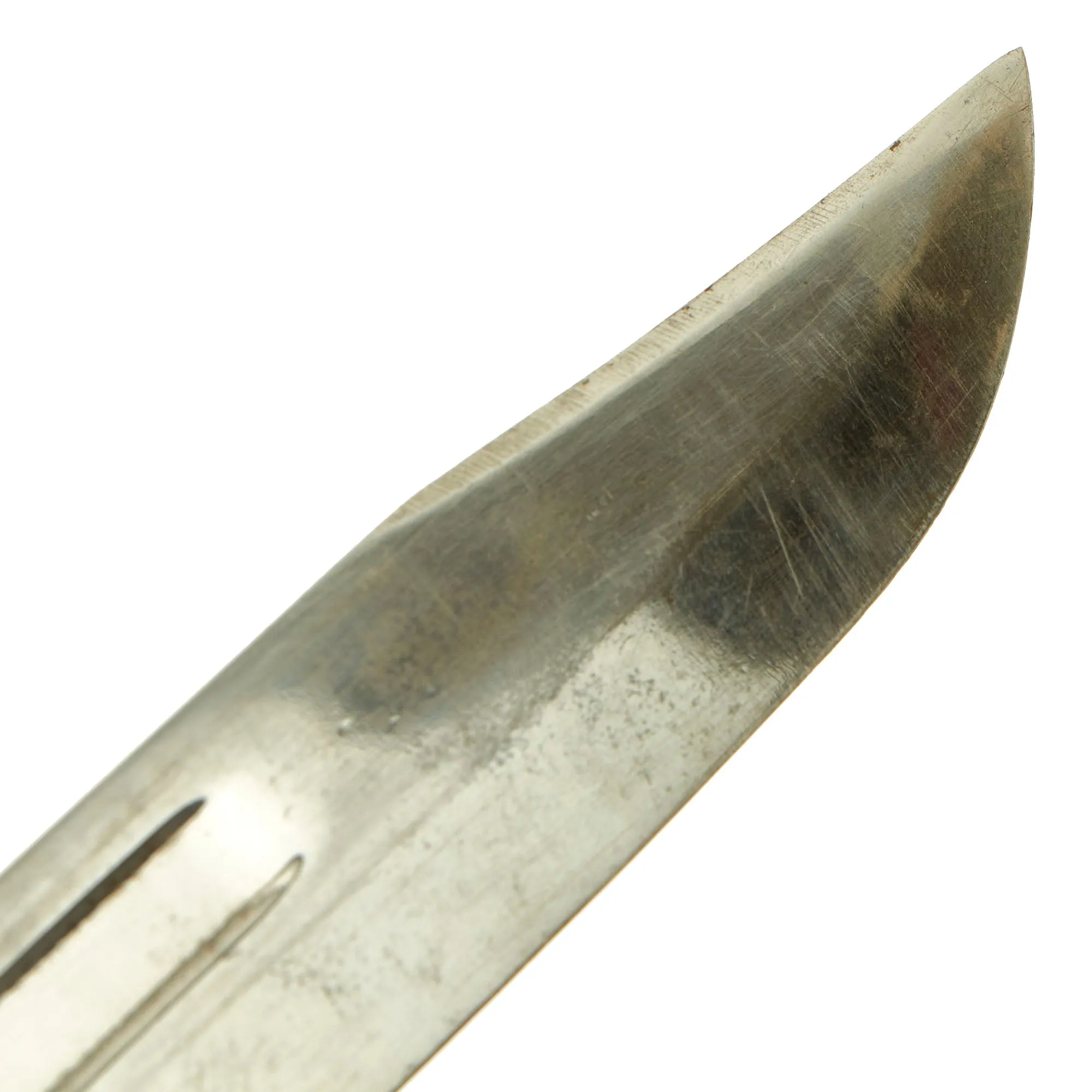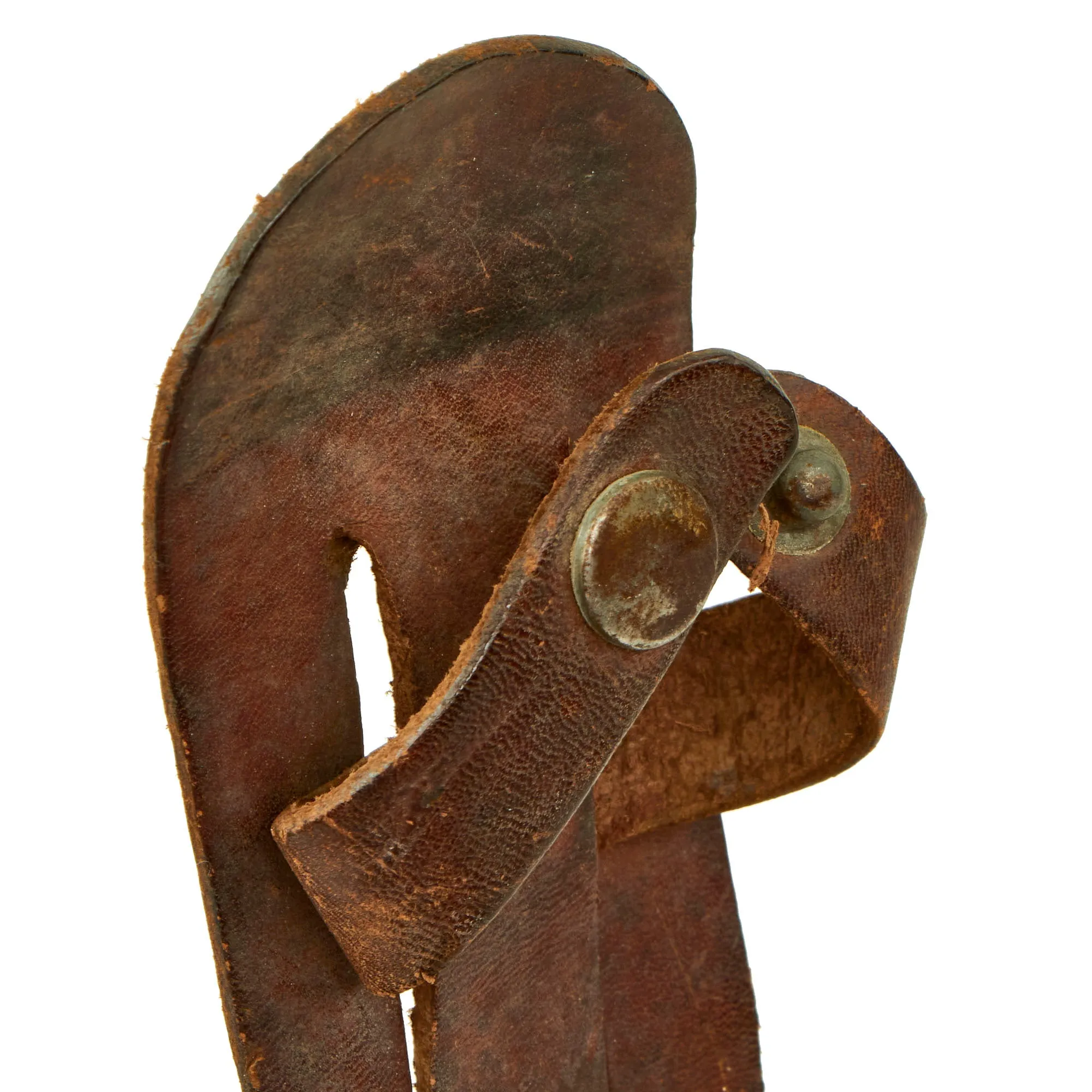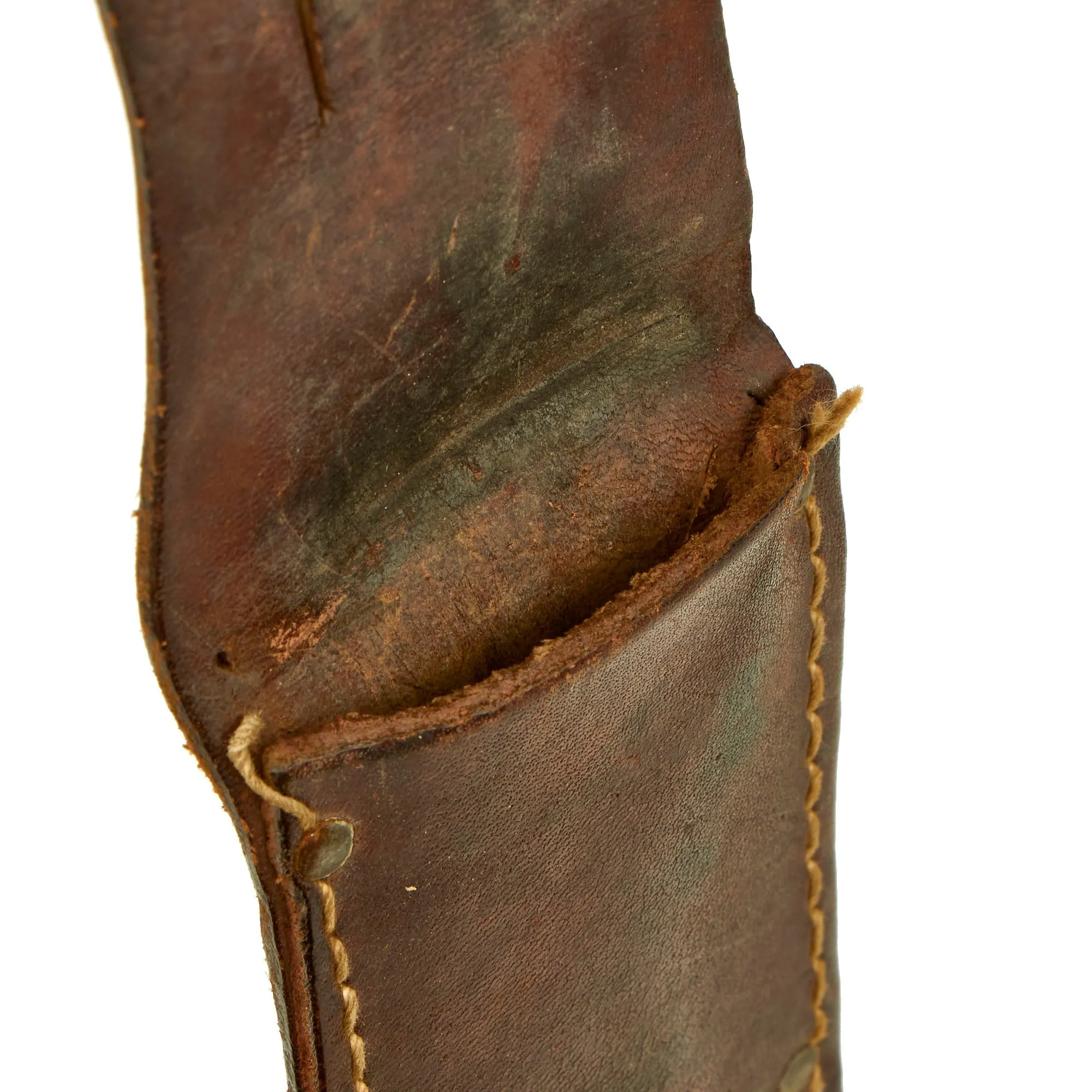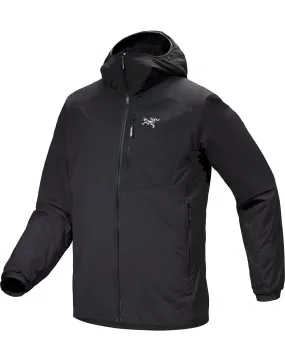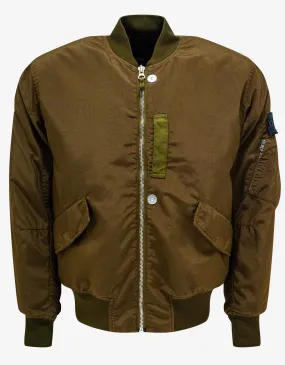Original Item: One-Of-A-Kind. This is a fantastic piece of WWII US Marine Corps pilot history! It is named to a USMC Captain James H. Phillips, who we believe to be a Pilot who was awarded multiple Air Medals as well as the Distinguished Flying Cross for actions against the Japanese in the Pacific Theater during WWII. Though this may not be him, the use of the aircraft type plexiglass and the ability to be able to utilize a machine shop on a ship would make perfect sense in this having belonged to him. The knife itself has the appearance of having been made from an already existing blade and could very well have been a Kabar given its appearance, though the pommel area is slightly different in shape.
The knife was constructed, most likely aboard a US Naval Aircraft Carrier where he had new grip scales made from heavy duty plexiglass. Underneath the glass there is lovely paint work done which is the typical USMC blue with red stripes. The writing appears to have been painted on backwards on the plexiglass so it would read properly on the front while looking at it.
The text is as follows:
JAMES H. PHILLIPS
CAPT. USMC
BOUGAINVILLE
FEB ‘44
The Bougainville campaign was a series of land and naval battles of the Pacific campaign of World War II between Allied forces and the Empire of Japan, named after the island of Bougainville. It was part of Operation Cartwheel, the Allied grand strategy in the South Pacific. The campaign took place in the Northern Solomons in two phases. The first phase, in which American troops landed and held the perimeter around the beachhead at Torokina, lasted from November 1943 through November 1944.
This knife was most likely meant to serve as a reminder of his service during the campaign, more specifically during the January–February 1944: encircling Rabaul during the Pacification Campaign.
The knife is accompanied with an original leather scabbard which is still structurally sound and in serviceable condition. The scabbard itself appears to be from an already existing one.
A lovely example ready for further research and display.
Specifications:
Blade Length: "
Blade Style: Clip-point "Bowie" Style
Overall length: “
Crossguard: ”
Scabbard Length: " with Belt Loop
Pacification Campaign
The capture of Bougainville and Buka brought Rabaul within range of land-based U.S. Navy and Marine Corps tactical bombers, setting the stage for the pacification campaign to follow. Rather than attempt to capture the heavily fortified position, the Allies determined to neutralize Rabaul by isolating it and eliminating its airpower. The first air attack in the pacification campaign was planned for 17 December 1943. It would be based out of Torokina Airfield on Bougainville and consisted of 31 Marine F4U Corsairs, 23 RNZAF P-40 fighters, 22 U.S. Navy F6F Hellcats, and a slightly smaller number of Army Air Forces B-24 bombers. The attack did not receive a large response from the Japanese, so only seven Japanese fighters were lost. Three RNZAF P-40s were lost, two with their pilots. A similar attack took place on 19 December, which cost the Japanese four aircraft, two credited to Marine fighters.
The first "large scale" strike took place on 23 December. Different from previous strikes, the Army Air Forces bombers went in first, and the fighters followed afterwards. Forty Japanese fighters responded this time, with thirty claimed to be destroyed by Allied fighters, though Japanese records do not match the Allied claims. Following another raid on Christmas Eve, U.S. Navy carriers attacked the Japanese force at Kavieng, New Ireland in unison with an air raid on Rabaul. The Navy carriers returned to Kavieng on 1 January 1944.
Throughout January 1944, the Japanese command devoted valuable carrier aircraft and carrier pilots to the defense of Rabaul. The seemingly hopeless situation in which the Japanese pilots were being fed into was nicknamed "the sinkhole in the Bismarcks," or the "Bismarcks sinkhole." January proved costly for the Japanese: 266 fighters were credited to U.S. Marine Corps fighters and bomber gunners alone, not including the physical damage done to Rabaul's land defenses. In February, the Japanese command decided to pull all remaining Japanese airmen and their crews from Rabaul. Between 70 and 120 Japanese aircraft flew from Rabaul to Truk (which had recently been raided by U.S. Navy carrier aircraft) on the morning of 19 February. Their valuable mechanics attempted to leave Rabaul by ship on 21 February, but their ship, the Kokai Maru, was sunk by Allied bombers. This marked the end of Japanese air resistance to Allied planes over Rabaul.




